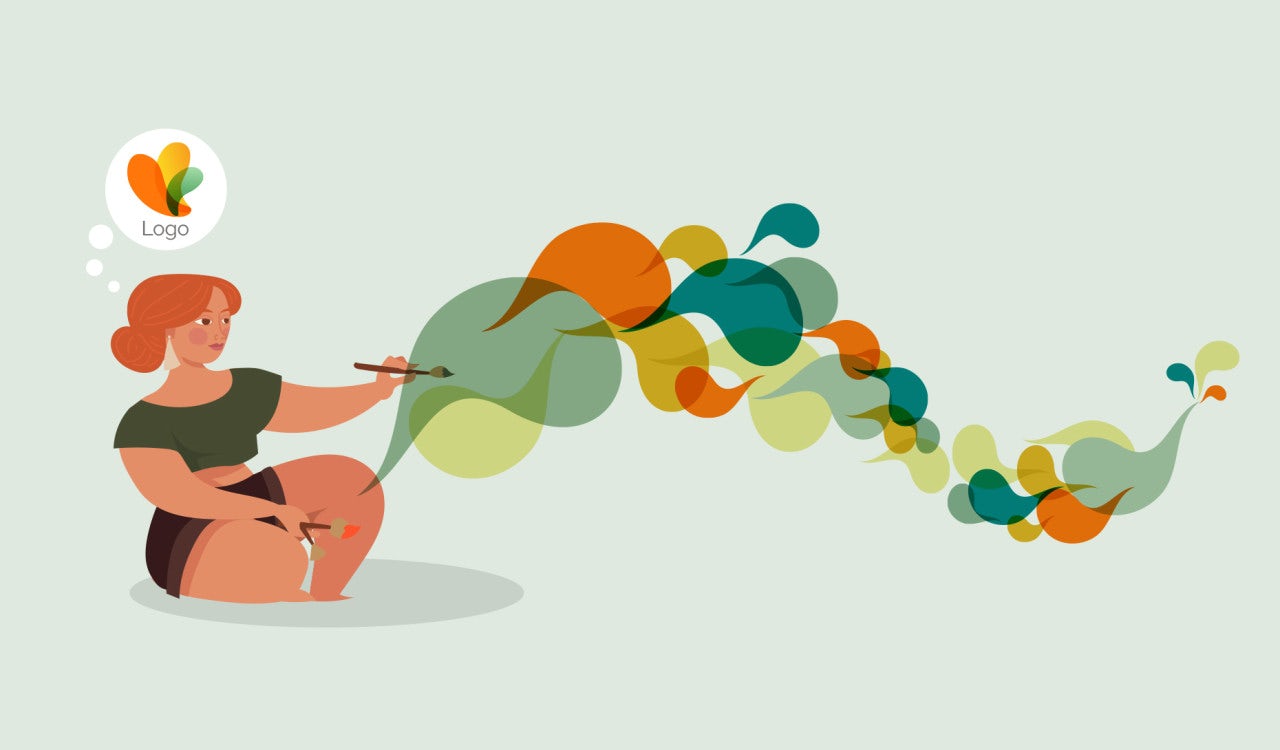A logo is often the company’s first visual impression of its audience. It’s a symbol that encapsulates a brand’s identity, values, and offerings into a memorable image. While creating a logo is an exciting endeavor, designing logos for different industries comes with challenges and inspirations.
This article will explore the intricacies of crafting logos across various sectors and delve into the creative process that drives successful logo designs.
Table of Contents
ToggleThe Significance of logos for different industries
Before delving into the challenges and inspirations, let’s understand why industry-specific logos matter. Every industry has its unique characteristics, target audience, and competition. A well-designed industry-centric logo can effectively communicate these aspects, establishing a connection with the intended audience.
Whether it’s a luxury brand’s minimalistic elegance or the children’s product’s vibrant playfulness, the logo is a visual language that speaks directly to consumers. Designing logos for different industries requires a delicate balance between conforming to industry norms and showcasing creative ingenuity.
The Challenges of Designing Industry-Centric Logos
1. Understanding Industry Nuances: Each industry has its own visual language and symbols. Designers must immerse themselves in the sector to grasp its nuances. A technology logo might incorporate sleek lines and modern fonts, while a healthcare logo could use softer colors and nurturing imagery. Striking the right balance between adherence to industry norms and creating a distinctive design is challenging.
2. Adapting to Trends: Design trends evolve rapidly, and logos must stay relevant without becoming obsolete. Balancing timelessness and trendiness is crucial. For instance, a tech startup might opt for a minimalist logo to convey innovation, while a vintage-inspired logo could work for a retro-themed café.
3. Simplicity with Complexity: Crafting a simple yet meaningful logo is an art. It should be easily recognizable while conveying the brand’s essence. Achieving this balance can be incredibly challenging in industries with complex finance or software development offerings.
4. Avoiding Stereotypes: Some industries have stereotypes that can hinder creativity. For instance, an eco-friendly brand must not always use green leaves. Designers must find fresh, imaginative ways to communicate a brand’s values.
Inspirations for logos for different industries
1. Nature-Inspired Logos for Eco-Friendly Brands: Eco-friendly brands often draw inspiration from nature. Elements like leaves, trees, and water droplets can symbolize growth, sustainability, and purity. However, a clever twist is required to stand out. The logo for the World Wildlife Fund, featuring a panda in negative space, is a prime example of combining a natural element with creativity.
2. Playful Logos for Children’s Brands: Logos for children’s products should exude joy and playfulness. Bold and vibrant colors, along with whimsical characters or objects, can capture the attention of young audiences. Think of the colorful Lego logo or the iconic Mickey Mouse ears for Disney.
3. Sleek and Modern Logos for Technology Brands: Technology logos often lean towards minimalism, using sleek lines, geometric shapes, and sans-serif fonts. Apple’s iconic logo perfectly encapsulates the brand’s minimalist and innovative approach.
4. Luxurious Logos for High-End Brands: Luxury brands emphasize sophistication and exclusivity. Such logos often utilize elegant fonts, metallic accents, and refined symbols. The logo of Chanel, with its interlocking C’s, conveys both simplicity and luxury.
5. Trustworthy Logos for Financial Institutions: The financial sector requires logos that evoke trust and stability. Strong, solid fonts and conservative colors like blue and black are common choices. The logo of American Express embodies the reliability associated with financial institutions.
The Creative Process Behind Industry-Centric Logos
Designing a logo tailored to a specific industry involves a meticulous creative process:
1. Research: Understand the industry, its values, competitors, and target audience. Identify common visual elements and explore ways to differentiate the brand.
2. Conceptualization: Brainstorm ideas that resonate with the industry’s essence. Sketch out rough concepts, considering both straightforward and abstract representations.
3. Simplicity: Simplify the concept to ensure the logo remains memorable and recognizable. Avoid clutter and overly intricate details.
4. Typography: Choose fonts that align with the brand’s personality and industry. A tech company might opt for a sleek, modern font, while a bakery could use a handwritten style.
5. Color Palette: Select colors that evoke the desired emotions. Colors have psychological associations; for instance, red can convey energy and passion, while blue signifies trust and professionalism.
6. Test and Refine: Gather feedback from colleagues, stakeholders, or focus groups. Refine the logo based on constructive input, ensuring it resonates with the intended audience.
Case Study: Starbucks
A notable example of a successful industry-centric logo is Starbucks. The global coffeehouse chain’s logo has evolved while maintaining its industry connection.
The original Starbucks logo, introduced in 1971, featured a complex and detailed design with a mermaid (siren) in a circular emblem. This logo conveyed the maritime heritage of the brand’s hometown, Seattle. However, as Starbucks expanded globally, the need for a more universal and simplified logo arose.
2011 Starbucks unveiled its current logo – a simplified, monochromatic version of the siren without the outer circle. This strategic evolution allowed Starbucks to transition from a coffee-focused image to a broader brand identity, including various beverages and products. The logo retained the siren, maintaining a subtle nod to the brand’s roots while embracing a cleaner and more adaptable design.
Conclusion
Designing logos for different industries is an art that combines industry knowledge, creativity, and design principles. The challenges lie in capturing the essence of an industry while avoiding clichés and remaining visually impactful.
Through research, creative exploration, and careful execution, designers can craft logos that resonate with audiences and stand the test of time. As industries evolve, so will the art of designing logos that reflect their unique characteristics. Designing logos for different industries requires a deep understanding of sector-specific nuances to create impactful and resonant visual identities.
Some lesser-known facts about logos for different industries
1. Logos for luxury brands often blend elegance with exclusivity, utilizing refined fonts and metallic accents.
2. Technology logos embrace minimalism, employing sleek lines and modern typography to convey innovation.
3. Nature-inspired elements in eco-friendly logos creatively symbolize growth, sustainability, and harmony with the environment.
4. Playful and vibrant designs dominate children’s product logos, captivating young audiences through whimsical characters and colors.
5. Financial institution logos opt for trustworthy aesthetics, employing solid fonts and conservative colors to convey stability and reliability.
FAQ
1. What is an industry-centric logo?
An industry-centric logo is a design tailored to a specific sector, incorporating visual elements that resonate with the industry’s characteristics and target audience.
2. How do designers balance industry norms and creativity?
Designers strike a balance by adhering to recognizable industry symbols while infusing creative twists to ensure distinctiveness.
3. What role do trends play in logo design?
Trends influence logo aesthetics, guiding designers to create relevant modern visuals without losing timeless appeal.
4. How do nature-inspired logos work for eco-friendly brands?
Nature-inspired logos use elements like leaves and water droplets to symbolize growth and sustainability, aligning with eco-conscious values.
5. What makes a successful logo for financial institutions?
A successful financial logo uses solid fonts, conservative colors, and strong visuals to evoke industry trust, stability, and reliability.
What’s Next: 6 Types of Content to Power Your Marketing Strategy





